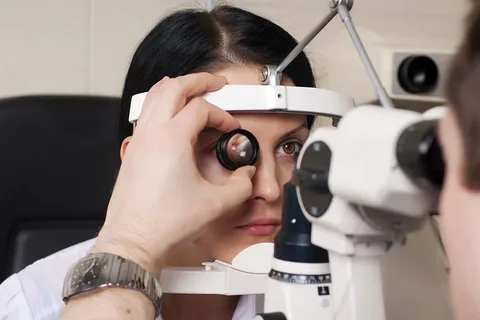What Causes Myopia and Presbyopia?
Myopia, commonly known as nearsightedness, occurs when the eyeball grows too long or the cornea has too much curvature. This causes light to focus in front of the retina instead of directly on it, making distant objects appear blurry. Genetics plays a major role in myopia development, but excessive close-up work and lack of time outdoors also contribute.
Presbyopia is the gradual loss of up-close vision that occurs as we age. Around the mid-40s, the eye’s ability to change focus from distant to near vision decreases. This is because the lens inside the eye hardens and becomes less flexible with age. The process is natural and inevitable. Myopia And Presbyopia Treatment affects nearly everyone older than 45 years.
Treatment Options for Myopia
Corrective Lenses
Eyeglasses and contact lenses remain the most common and affordable treatments for mild to moderate myopia. Glasses correct vision by refracting incoming light to focus it correctly on the retina. Contacts fit directly on the eye to fulfill the same function. Newer designs like multifocal and toric contacts help with presbyopia symptoms too.
Orthokeratology
Orthokeratology uses special corrective contact lenses worn overnight to temporarily reshape the cornea and reduce myopic prescription the next day. The contact lenses mold the cornea into a less steeply curved shape. Vision remains corrected until the corneal remodeling fades, usually by late afternoon.
Refractive Surgery
Laser-assisted in situ keratomileusis (LASIK) reshapes the cornea using an excimer laser to correct nearsightedness, farsightedness and astigmatism. The procedure provides rapid recovery of functional vision within a day. Other refractive surgeries for higher degrees of myopia include phakic intraocular lenses, lens extraction with implant, and corneal ring segments.
Treatment Options for Presbyopia
Reading Glasses
Single-vision reading glasses with the proper magnification are suitable for uncomplicated presbyopia. The strength needed varies with the reading distance but typically ranges from +1.00 to +3.00. Bifocals or progressive lenses are beneficial if significant headaches occur from frequent focusing changes.
Mono-Vision Contact Lenses
One contact lens is prescribed for distance vision while the other is for near vision. This technique exploits the natural monovision effect by disabling one eye’s up-close functions. It reduces dependency on reading glasses but decreases depth perception somewhat.
Presbyopia-Correcting Intraocular Lenses
New premium intraocular lenses (IOLs) implanted during cataract surgery have optical designs to treat presbyopia. These include multifocal IOLs with multiple focal points and extended depth of focus IOLs that broaden the eye’s depth of focus. Vision is improved for both distance and near without additional lenses.
Are Refractive Procedures Safe for Myopia and Presbyopia?
Refractive eye surgeries like LASIK have an excellent safety record but are not risk-free. Rare but serious complications can potentially include severe visual disturbances, infections, and long-term thinning of the cornea. The risks generally increase with higher prescriptions. Careful patient selection and experienced surgeons minimize adverse outcomes.
For presbyopia, lens-based procedures have shown great promise with low complication rates. Intraocular lens implants avoid dependency on glasses at the cost of some loss of contrast sensitivity under low lighting. Ongoing research further optimizes these lens designs to expand the range of vision correction.
Myopia And Presbyopia Treatment can now be treated conveniently and effectively through a range of options from glasses and contact lenses to refractive surgeries and lens implants. A comprehensive eye exam determines the best approach tailored for each individual’s degree of refractive error and lifestyle needs. With proper management, clear vision at all distances is achievable throughout life.
*Note:
1. Source: Coherent Market Insights, Public sources, Desk research
2. We have leveraged AI tools to mine information and compile it



